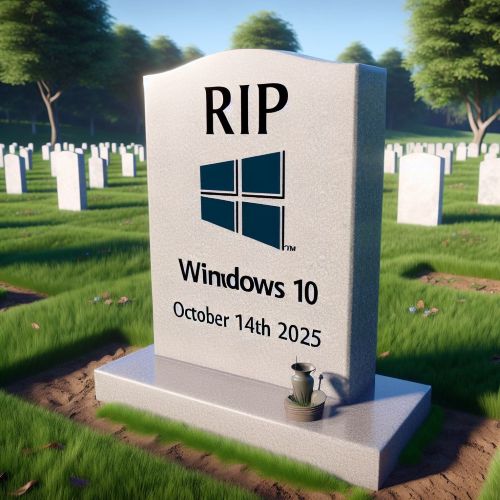Windows 10 End of Life & Migration to Windows 11

GDCS has a proven track record of helping clients plan and migrate to Windows 11. We offer comprehensive advice and support for your current Windows environment and migration process. Partnering with suppliers, we can provide both new and refurbished desktops and laptops, seamlessly deploying them into your environment and transferring your data and software to new Windows 11 workstations. Additionally, we can evaluate your existing Windows 10 machines to identify cost-effective upgrade paths. Contact us for more information.
Don’t wait until the last minute to migrate! Take advantage of the available stock now and avoid the rush.
Microsoft previously announced that Windows 10 will reach its end of support on October 14, 2025
- This means that after this date, Microsoft will no longer provide technical support, feature updates, or security fixes for Windows 10.
- While your PC or laptop will still function, it will become increasingly vulnerable to security risks and compatibility issues without these updates.
- Why is this happening? Microsoft’s decision for Windows 10 End of Life is part of its Modern Lifecycle Policy, which aims to ensure that users have access to the latest technology and security features.
- Windows 10 has been a reliable operating system since its release in 2015, but technology has advanced significantly in the past decade. Windows 11, which offers enhanced security, better performance, and new features, is now the focus of Microsoft’s development efforts.
- What should you do? If your PC or laptop meets the minimum requirements for Windows 11, you can upgrade for free through Windows Update. As one example, Intel Generation 8 processors (released circa 2017) and above do support Windows 11.
- This will ensure that you continue to receive the latest updates and security features. If your PC is not compatible with Windows 11, you have a few options:
1 – Upgrade your hardware: Consider purchasing a new or refurbished PC that meets the requirements for Windows 11.
2 – Explore alternatives: If you prefer not to upgrade to Windows 11, you might explore other operating systems, such as Linux, which can run on older hardware.
3 – Continue using Windows 10 at your own risk (Not Recommended): If you opt to remain on Windows 10, it’s crucial to implement strong security measures, such as antivirus software and regular data backups.
4 – Pay Microsoft for Extended Security Updates (ESU): In some circumstances, you can elect to pay Microsoft for Critical and Important updates for a maximum of 3 years (Extended Security Updates (ESU) program for Windows 10 | Microsoft Learn)
ESUs doesn’t include the following items:
- New features
- Customer-requested non-security updates
- Design change requests
- General support won’t be provided for Windows versions past the end of support date. Support will be available only to those organizations that purchase ESU for specific situations concerning the security updates. To get technical support, organizations must have an active support plan in place.
Conclusion: The end of support for Windows 10 marks the end of an era, but it also opens the door to new opportunities with Windows 11 and other modern operating systems. By planning ahead and making informed decisions, you can ensure a smooth transition and continue to enjoy a secure and efficient Windows experience.
- More from Microsoft here: Windows client roadmap update: April 2023 | Microsoft Community Hub
